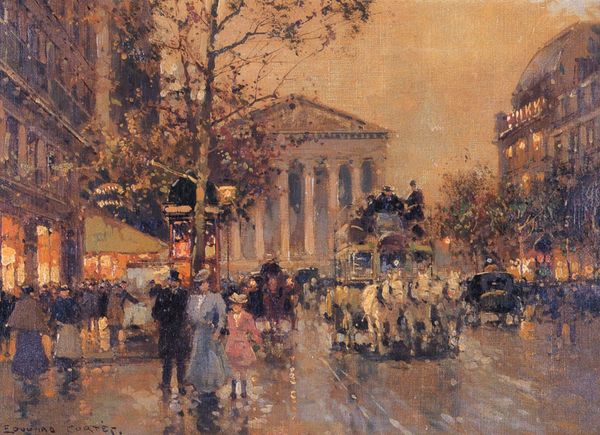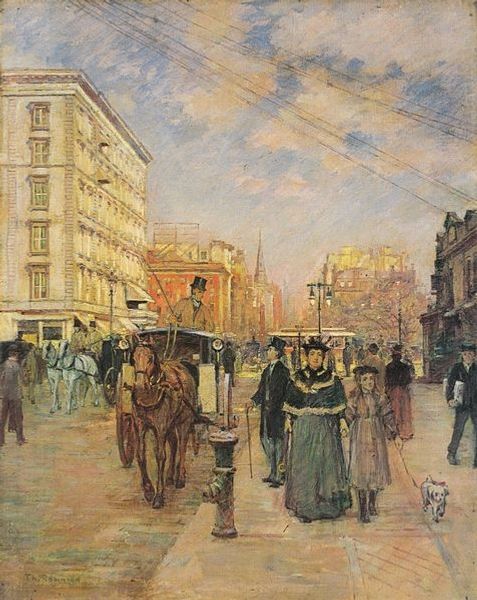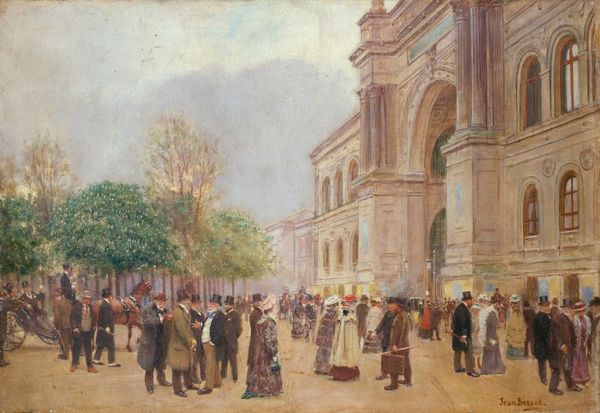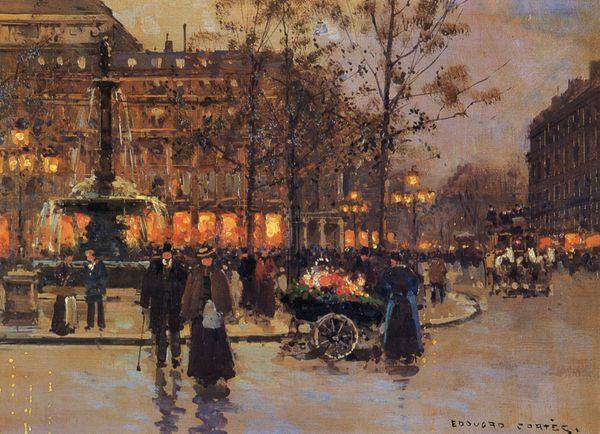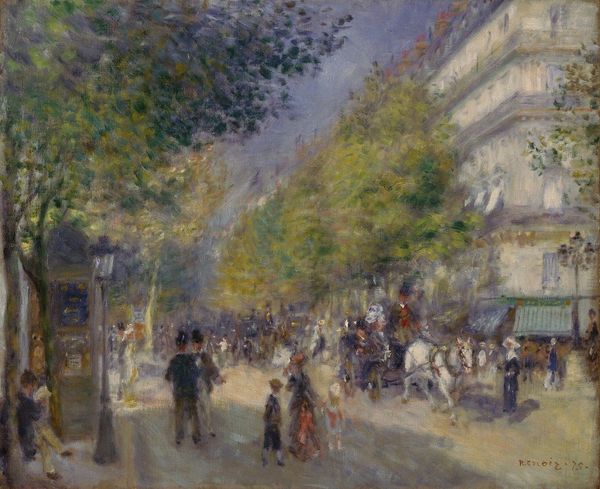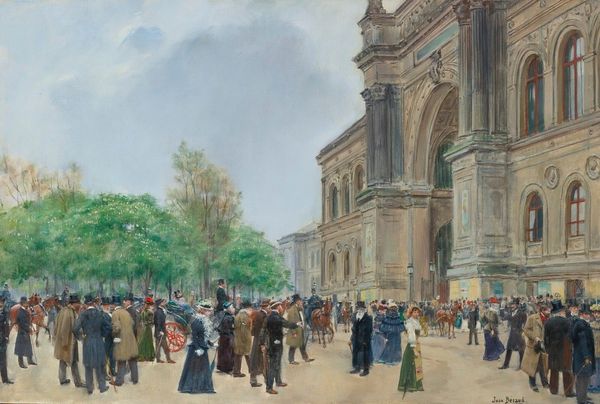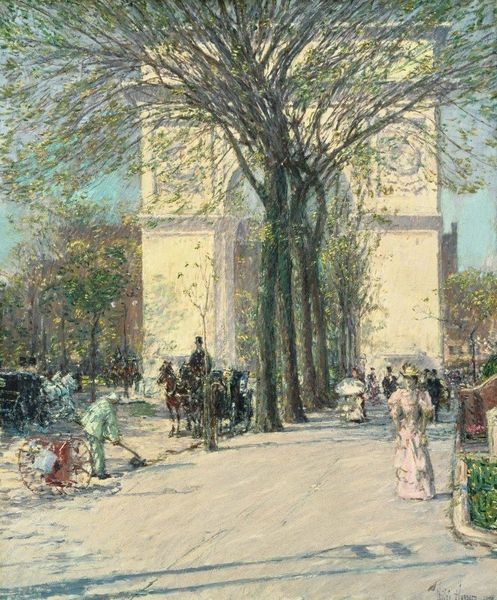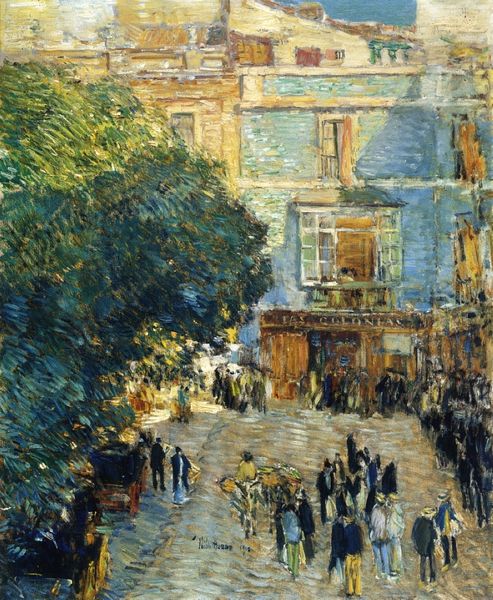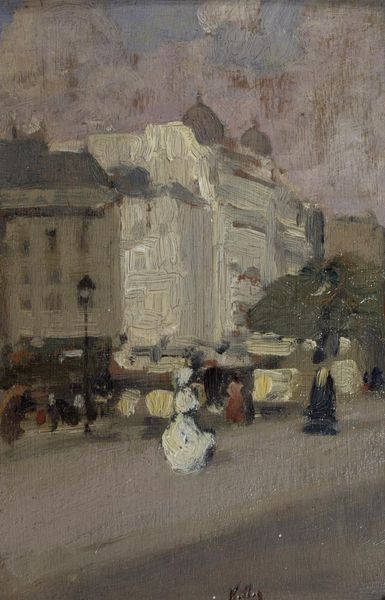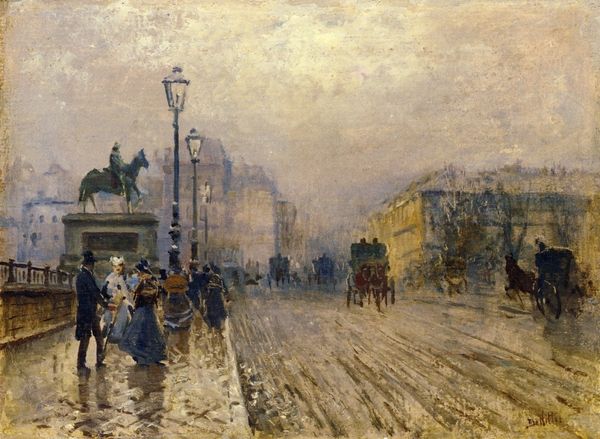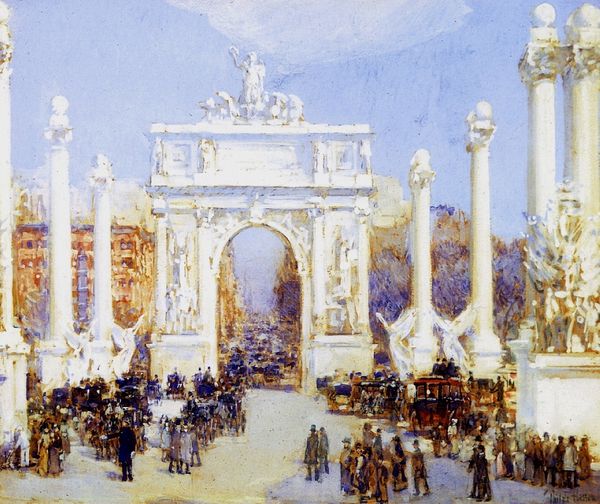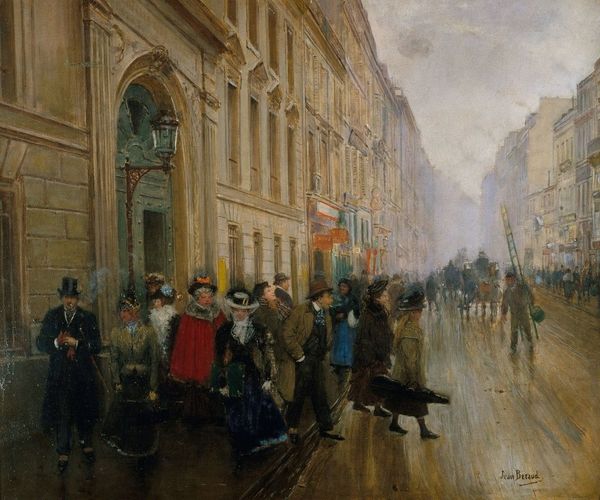
Copyright: Public domain
Editor: This is Childe Hassam’s “The Manhattan Club,” painted in 1891 using oil paints. It gives the impression of a bustling city scene. I’m drawn to how Hassam captures a specific moment in time. What kind of social commentary, if any, do you think Hassam is making with this work? Curator: Hassam wasn't merely depicting a scene; he was documenting the societal shifts of the late 19th century. Consider the 'flâneur' archetype – the detached, observant stroller in urban life. Hassam, through his impressionistic lens, captures this figure within the context of the rapidly evolving class structures in a city like New York. Note the Club itself - Who were the people gathering there, and what was being excluded? Editor: It looks like primarily well-to-do people are depicted... perhaps men especially? Curator: Exactly! Hassam subtly unveils a very specific experience of modernity – one largely defined by wealthy, white, and male experiences. Who occupies the public sphere, and who has access? Notice the women depicted and how they are constructed within this space and time. Is there a dialogue about consumerism happening? Editor: So it's not just about aesthetics, but about questioning who gets to participate in this vision of urban life. It's also fascinating how his style, which seems carefree, is really highlighting deeper issues. Curator: Precisely! We are not only looking *at* art, but using art as a cultural document. It opens avenues for a conversation on the construction of urban spaces, gender dynamics, and socioeconomic disparities. It really gives you a richer way to analyze similar works in the future. Editor: I will never be able to unsee what is contained within this seemingly straightforward artwork, so thanks!
Comments
No comments
Be the first to comment and join the conversation on the ultimate creative platform.
